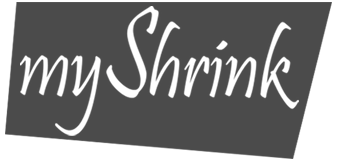Did you know that an holistic use of therapeutic massage can reduce the symptoms of anxiety and depression? That it could actually rid you of a phobia?
Not only that, it just might turn out to be the preferred way for treating the emotions underlying many chronic physical symptoms?
Intrigued? I sure was!

Dr. LaCombe Interviews Erika Moore, RMT
I had been practicing brain-and body-centered psychotherapy for a couple years before I came across the work of Erika Moore, R.M.T ("Registered Massage Therapist"). From what I'd heard of her reputation, I knew that she was no ordinary "hands-on" masseur, but a practitioner who knew a thing or two about the mind-body connection.
You see, after many years of searching, Erika discovered that because the mind and body are so intimately connected, there are many chronic physical complaints that can be healed only if a natural healing process is triggered. Deep healing occurs when the emotional energies that have been bound up in the physical injury are "unfrozen", or discharged.
In other words, sometimes the trick to relieving painful physical symptoms lies in resolving an underlying emotional conflict, which is usually related to how the injury originally occurred. In Erika's work, the mind is just as important as the body.
I am so pleased that she agreed to be interviewed. Her holistic approach to working with trauma and physical injuries is unique, although it is somewhat controversial. Of one thing I'm positive - there aren't many RMT's who who see the big, holistic picture like she does.
In the audios below, Erika shares how she came to develop the totally innovative, body-wise approach she takes to massage therapy.
It's a fascinating look at a true pioneer in the world of holistic therapy!
In a highly unusual move, Erika got into massage therapy knowing that traditional practice completely ignored the mind-body approach. Traditional practice wasn't going to be enough for her, but she was 'on a mission', and determined to find a way to incorporate the mind and emotions into her practice. It took a while, but neuroscience research eventually caught up with her and verified her vision in a singular 'aha' moment.
Q. How was it that you came upon your innovative way of doing massage therapy?
Erika and I share a similar problem. Because our work is experiential, words don't adequately capture the work we do.
Q. Is this approach to healing a quantum leap beyond conventional therapy methods? Do you have some examples?
Many folks who come to see me for therapy have expectations that it will be like what they see in the movies - lots of back and forth talking.
I wanted to know if Erika ran into the same thing - folks having set expectations around the work.
Q. What expectations do patients typically come in with?
The key idea of Erika's body-wise approach to physical therapy is that when the body suffers an injury, the nervous system can sometimes 'hold' or maintain the symptoms (eg. bracing, locking of muscles, chronic stiffness in joints). Standard massage manipulation offers only temporary relief.
Only by a process of 'resourcing' can there be an internal 'shift' in the nervous system that finally releases the blockages.
Q. What is it about "touch" that new clients need to understand about your therapy?
In both our work, Erika and I run into clients that are dissociated from their body. They have little sense of the sensations. I was curious how Erika worked with dissociation.
Q. How do you help clients to recognize their dissociation?
What clients 'get' from Erika's approach is not only a release, or 'discharge', of the emotions (.ie. fear, pain, terror) that underlie their physical symptoms. Ideally, they will also come to totally accept without fear the natural processes that led to this release. The ultimate goal here is to 'normalize' the discharge process so that it can occur naturally, during everyday life.
Q. What have been the special moments in your work?
Erika explains that it's so hard to explain how her unique, holistic approach works, mainly because it's so consummately experiential. To put it at its simplest, it all happens in the body "with the mind and spirit present".
Q. What's the simplest way to explain how you approach your work?
Q. How long does the average client take to make real progress?
When a health practitioner is improving the workings of the nervous system, it has the effect of creating change in areas that you'd least expect. That's why our work is referred to as "holistic".
Q. Can you give our listeners some examples of clients who've made unexpected changes in their lives as a result of your technique?
Q. What tools do you use in your work Erika?
Erika's Replies to Visitors

Sky
Will it help migraines?
Hello Erika,
I have really enjoyed these discussions you have had with Susan. In fact I am now fascinated!
I listened to your last discussion with Susan (about migraine) a couple of times as migraine headaches have been the bane of my life. My couple of questions are -
Recently I accidentally I came across something. If I have a migraine, both in summer and the UK winter too, and I turn on a big fan, close to, about 3 feet away from my head (in bed), and it does seem to help just a bit. I believe better than without it. When you speak about the heat and discharge, do you mean this kind of body heat that I feel acutely in my head when with a migraine? In other words it feels as though if I am able to keep my head even slightly cooler, then that is preferable.
I have recently come across Susan and her website, and now her Brain Coaching Program. Everything is making such sense, and I am trying to practice and do what she says, discharge being the thing I know I am particularly bad at because I fight it! The minute I feel what I didn't know was discharge starting, I tighten up, distract myself, tell myself "Stop it" because of course I don't want people to notice that anything is "wrong" with me!
Once a migraine starts that's me out of the picture for 2 to 3 days, in bed, in the dark, nauseous for the first day, and just misrerable with pain.
I would like to go to someone like you. I really believe I very much need to. I wondered whether you could suggest anywhere in the UK (other than looking on the internet)† where I could start looking? Is there a Society For therapist/massage people like you?
Thanks Erika, and I am sorry this is such a long question/post. If I am ever having a very long holiday in Vancouver (I wish!), I will come and see you....if I may.

Erika
Hello Sky,
Thank you for contacting me. I am sorry to hear about your suffering with migraines and I am glad, that the information in our discussion is of interest to you.
My sincere apology for having taken so long to respond!
It must be so challenging living with this painful condition. As I picture your experience with the fan, I can well imagine, that the cooling effect of the fan in itself is helpful. (Just like immersing one's feet in hot water and applying a cooling compress at the nape of the neck appears to be effective for some people.)
I am also wondering though, if the sound and movement of the fan is soothing and thus elicits a parasympathetic nervous system (PNS) response. This in turn would lower the activation of the autonomic nervous system and the associated heat in the body. The PNS is the 'rest and digest' branch of the nervous system. In contrast, the sympathetic nervous system (SNS) is responsible for fight/flight activation, resulting in higher heart rate, increased rate of breath, raised blood suger, hightened energy in the muscles, all contributing to increased heat in the body.
One of my migraine suffering clients became very skilled at tracking the sensations associated with a fight response that was present at the onset of a migraine. She also learned to let go of thoughts that kept the fight response going. Through much practice of specific skills, such as grounding, centering and embodying resources, she was eventually able to allow the associated heat dissipate, thus avoiding a major migraine episode.
The act of self-observing and allowing the sensations to 'move through' can initially be quite challenging, especially if you are on your own. I suspect that it would be so much easier for you to practice these skills with a trained professional supporting and guiding you. In the meantime I encourage you to keep noticing your body reactions with a sense of exploration, and approach your findings with curiosity, compassion and acceptance. Just be gentle with yourself.
I am aware that the organization I have studied with is training therapists in the UK. You may want to contact the Canadian Foundation for Trauma Research and Education via their website www.cftre.com.
Heartfelt wishes for the best possible support on your journey toward health and wellbeing. And of course, should you ever come to our beautiful city, I would love to meet you!

Laura
Where do I get training for this type of work?
Hi - I am fascinated by this interview, so thank you so much for your sharing. After many years of therapy, I've always considered the possibility of studying counseling.
Recently, I've also benefitted from chiropractic, massage and sports therapy. (one practitioner, in particular, seemed in tune with your perspective, but he has moved.)
It'd be wonderful to do some more research on your variety of body-mind healing and I thought perhaps you could give me some names of pioneers or programs for me to search further.
I feel very connected to your words and it is feeling closer to my career "next steps". Thank you for your time! (I live near Seattle)

Erika
Hi Laura, thank you for contacting me. I was influenced by many excellent teachers and therapists.
I am happy to give you an overview in point form:
- Training with a Sexual Assault Centre that allowed me do provide phone support on the crisis line.
- 2500 hr Massage Therapist/Hydrotherapist Diploma Program.
- Further Training in: Myofascial Release, Craniosacral Therapy, Visceral Manipulation, Applied Somatics (T. Hanna)
- Extensive Training with the Canadian Foundation for Trauma Research and Education (Self Regulation Therapy Practitioner Training)
- Meditating with the Body with Reginald A. Ray
- Currently I am enrolled in a Resource Oriented Skill Trauma Training with Merete Holm Brantbjerg (MOAIKU)
Much of my reading is about Neuroscience and Tauma: anything by Daniel J. Siegel, Trauma and the Body, Pat Ogden, Being a Brain-Wise Therapist, Badenoch, Dr. Robert Scaer, Babette Rothschild, and Peter A. Levine.
I know that Peter Levine and Pat Ogden offer training in the US - I am not certain that SRT is available as a training in Seattle - however you might locate a therapist in your community that knows SRT. SRT has many similarities with Somatic Experiencing by Peter Levine.
Aside from the various trainings, my biggest learning comes from pursuing better skills at regulating my nervous system - it's an ongoing effort and so worth it!!
Laura, I hope this is helpful to you.
Heartfelt wishes for your unfolding!†

Kristen
How do you find a holistic massage therapist?
Hi there,
What are some things that I could look for in a massage therapist that indicate they have more of a holistic approach?
Also, if they only recognize a little bit regarding the mind-body connection, but don't address it as thoroughly as you do, is it possible to still get some long-lasting benefits?
Thank you! Kristen

Erika
Dear Kristen,
I must admit that your question challenged me. I hope that my thoughts give you at least a partial answer to your first question.
In my treatments I aim to assist my clients to increase awareness, tolerance and acceptance for body sensations as they arise. I share what I know from neuroscience to help de-mystify the physiological responses that contribute to soft tissue tension, or the opposite, lack of energy in the muscle.
When indicated, I teach body resourcing skills such as: grounding, centering, flexibility and regulating contact with the environment. I also assist my clients to complete thwarted fight/flight or orienting responses.
The hands on portion of my treatment is in support of regulating the nervous system. I tend to postpone or modify touch if it increases activation or increases the likelihood of dissociation.
I believe that increased awareness and insight coupled with compassion and acceptance for what is arising in our bodies is a necessary and very beneficial first step toward the change we desire. If learning is experiental and truly embodied it certainly can contribute to lasting change.
Erika spent a little more time and elaborated on her comment to Kristen:
Hi Kristen,
I've pondered your very interesting question and have some further thoughts that I hope you'll find helpful.
Prior to my trauma training I was not familiar with the concept of dissociation. However, as body therapists we often experience the reality of 'not being present' or of having 'split off' from parts of the body. Even therapists who aren't familiar with the terminology of dissociation can feel when a client 'leaves the table' energetically.
Consequently, I'd explore how the therapist might work with that phenomenon, how she could help the client to explore this state and work with the underlying activation within a window of tolerance.
Before I understood the role of the autonomic nervous system in trauma, I would try to increase the range of motion in a joint without reservation. I didn't know that a joint can lock as part of a protective freeze reaction. I discovered that attempting to restore flexibility without first addressing the underlying trauma-freeze pattern can backfire.
In fact, the patient often feels very vulnerable during or after the treatment and quite often the bracing in the joint reappears with even more strength.
Accordingly, I would point out that the therapist must be familiar with the fight/flight/freeze response and be able to work with the survival energy bound up in those responses.
As physical therapists we are trained to attend to the injury and the location of pain. However, in an attempt to restore tissue health we might inadvertently work within a boundary rupture, causing the client to feel uneasy and triggering an alert reaction.
This reaction contributes to full body tension, or bracing. Boundary repair work needs to be primary in order to work effectively on the site of trauma.
Thus, the therapist must be familiar with the concept of boundary rupture and repair.
Often just talking about an injury and discussing details can bring on high activation, as evidenced by increased heart rate, restriction of breath, clammy hands, etc. We must never forget that the act of remembering and paying attention to the injury and pain can increase body tension or trigger dissociation.
Thus, the therapist must be familiar with the concepts of grounding and resourcing to help settle these physiological symptoms of arousal.
Various hands-on techniques encourage tissue healing and support adaptation after an injury. Adjusting alignment can bring great relief and restore a sense of ease. However, if the symptoms assert themselves again and again I am inclined to investigate further.
Is there a pattern? If so, what keeps it going? How can we interrupt the pattern and come to resolution and integration? To answer those questions we need to go beyond techniques and be willing and able to explore with heightened awareness.
For years I struggled with sciatic pain and relied on physical interventions via massage therapy, myo-fascial treatments and corrective exercise. They all helped and taught me a lot about my body. But it was only after I had help from a somatic therapist that I was able to become aware of the underlying pattern.
As it turned out, a subconscious contraction put pressure on my sciatic nerve. This sounds simple enough, but the work involved in discovering the pattern and working with it required the 'unpacking' of my 'history'.
Our histories are held in our bodies - and for that journey you need a trained, educated, grounded and regulated Therapist.
I am happy to report that I now have the necessary 'tools' - awareness and skill - to avoid contraction of my piriformis muscle. It no longer puts pressure on my sciatic nerve. Today I can often predict whether a situation will trigger a defensive bracing, and I can use skills to avoid 'sliding' into the pattern.
Finally, I am empowered and 'at home in my body' - and I wish no less for my clients!
All the best.

Jackie
Looking for a massage therapist in Colorado
Where do I find a massage therapist who does this sort of work? (I live in northern Colorado?)

Erika
Hi Jackie, thank you for your interest. I am not aware that Self Regulation Therapy, the method I have trained in, is taught in the US. However, similar somatic systems are widely offered in the US. To my knowledge, the trainings are open to Massage Therapists and Body workers. You can find a Practitioner Registry for Somatic Experiencing and the Sensorimotor Psychotherapy Institute on the Web.
Wishing you the best on you somatic healing journey.
Be well, I hope you don't mind that i think of you as my much treasured midwive!
Click below to hear more from Erika Moore:

